How DHA built its stormwater drainage system
Who designed the stormwater drains in DHA which were sunk into the median of the roads and covered with concrete slabs with slits. You know, the ones which go ‘gadd-gadd-gadd’ when you drive over them. What on earth was that person thinking when they designed them? This kind of urban engineering felt oafish and primitive, as if DHA had cheaped out on a solution.
As it turns out, the solution wasn’t cheap—Rs2.3 billion went into it—but it was relatively primitive as far as stormwater drains go. For Dr Bashir Lakhani, the man who built this system, it was, however, the only option. He spoke at length with Aaj News about flooding in DHA, why it happened again this July, how he laid the network of drains and what must be done to prevent a disaster next monsoon.

A monsoon crisis in DHA
Let us take you back fifteen years. The monsoon broke a 90-year record with 17.2mm in one hour on June 23, 2007. Over two hundred people were killed. The city was submerged. But in DHA it was a crisis the likes of which the housing authority had never imagined.
The board went to one man who they felt could help: Dr Bashir Lakhani, a PhD from the University of Arizona in irrigation and water resources who had left a cushy teaching job so he could return to work in Pakistan where he now ran his own firm Techno-Consultant Pvt Ltd. Their confidence was based on the fact that he had built K-III, Karachi’s bulk water supply project, and delivered it during Mustafa Kamal’s tenure. Few people knew Karachi’s terrain and water like him.
“When I did the calculations and gave them the numbers, I told them that the rainwater was one hundred times more than sewage,” he said, referring to his meetings with DHA in 2007 as they scrambled for solutions to the flooding. Between Khayaban-e-Hafiz, E-Street and Khayaban-e-Ittehad and Beach Avenue, which is a large chunk of DHA, his estimations yielded 500 million gallons of water.
DHA was desperately using bowsers to get rid of it. “I told them that you can keep doing this but you won’t be able to drain it all out,” he said. They insisted they had to pump it out. “I said, just go to Dhabeji. It pumps 500 million gallons a day to Karachi. Look at how huge the system is there. Can you install a system like that, which is going to operate maybe once a year. Could you maintain such a system? No. It’s not possible.”

DHA’s only solution in this crisis was natural gravity. So, upon Dr Bashir’s advice, they broke Beach Avenue and cut through Khayaban-e-Shamsheer and Seher.
The water started leaving.
Giving DHA drains
Tackling DHA’s standing water in 2007 was the most immediate task. Then the authority asked Dr Bashir to build them a drainage system by the next monsoon. The original parts of the housing society, DHA Phases I and II, had been built with drains. “But when the subsequent Phases were made, they were executed in the 1990s when Pakistan was going through an overall hydrological dry season,” said Dr Bashir. (Karachi is located in an arid, semi-arid region). They just didn’t think it would ever rain.
Now, the challenge was that DHA had already been built, so the ground was lined with underground utility connections. Space was limited on the sides of roads. There were no footpaths to put new drains under either. “So,” said Dr Bashir. “I had to do it in the middle of the road.”

At first he thought he would cut the whole length of the road to sink a box-shaped drain under the surface (for technical reasons he didn’t choose pipes). He would give openings at the sides that would connect to oblique (sloped) underground drains that would fall into the main box drain deep down. But that meant they would have to shut down the whole area. So that idea was thrown out.
He knew that he had to build in the middle of the road, but the question remained: how would the rainwater go down into any drain he created? He proposed iron grills every 10 feet but DHA said they would get stolen.
Finally, he decided on the covered concrete slab with the slits.
“When I made this plan. I still remember it, the DHA authority meeting. The administrator, Brig. Iftikhar, knew me from K-III. He had confidence in me. This is going to cost Rs2.3 billion which is on average Rs200 million per month. The secretary stood up, saying it was impossible. Then there was a lot of debate. There was a deadlock. But then Iftikhar said, ‘Dr Sahib, can you do it?’” Dr Bashir said he could. It would be up to DHA to get the money.
They got precast 1m x 1.5m RCC concrete drain sections made from a Chinese contractor. The trick was to contract out each road to a different contractor, so work got done faster. The result? Something that looked like a stormwater drainage system, the kind you build for a client when they wake up twenty years later and realise they need one.
“I personally don’t like it,” confessed Dr Bashir. “The slits get clogged.” He is remarkably candid. The fact remains though that maintenance was DHA“s headache.
A year later, another monsoon test
When the next major rains came, Dr Bashir was curious. “I remember in 2009, I had a Prado and it was raining at night so I went to see the status of our work,” he said. He headed to Khayaban-e-Shamsheer when his phone rang. Brig. Iftikhar was on the other end. He and other DHA members were at Beach Avenue. “Doctor Sahib, the water is filling up one to 1.5 feet!” Dr Bashir replied, “Yes, it will for sure.” He tried to patiently explain that he had designed the system for one inch of rain in three hours (or 8 inches in 24 hours). They were experiencing triple that volume.
“Did we underestimate?” Brig. Iftikhar asked Dr Bashir.
Dr Bashir advised the brigadier to go to the outlets they had created on Beach Avenue. And sure enough they were gushing with water pouring into the sea. “I told him it would be clear by Fajr,” said Dr Bashir. The system was working.
Yes, it had seemed critical for a bit there. But you never design for the peak volume. You can never cater to it. There was also a misconception that DHA was below sea level, said Dr Bashir. It isn’t. He explained to Brig. Iftikhar that he had made the design according to the tides. Dr Bashir had figured that he could manage to design DHA’s drainage for low-high tide. The high-high tide would last two hours. It would be uncomfortable for a while but then the water would eventually leave.
Tackling Clifton’s 2007 flooding
Along with DHA, the city government had also enlisted Dr Bashir Lakhani’s help, but for Clifton, especially block 7, which had flooded in 2007. Remember the flooded underpass?

“Clifton had one advantage,” he said. “It had footpaths.” Drains are usually built under footpaths. “I made my drains under them and gave them openings between Three Swords and the underpass.”
A drain was created on both sides of the road and connected to Nehr-e-Khayam. All Dr Bashir had to do was calculate at what level the water was in Nehr-e-Khayam and work backwards (from the point of disposal) to the source of the water in Bath Island. Sewerage and stormwater systems are always designed from the end or disposal point; if you start from the source of water and go to the end, you risk the water backing up into the system.
The KPT-Schön Circle underpass has small drains and a pump but if water from its surrounding area doesn’t drain away, the tunnel will flood. The underpass isn’t built to act like a drain. The drains are supposed to cater to the underpass’s own water. If water from the surroundings comes into the underpass, it can’t take it. The water of the surroundings has to be handled in the surroundings.
DHA Phase IV’s unique problem
Dr Bashir makes special mention of DHA Phase IV, which is a particularly troubled area because it is low-lying. This is from Khayaban-e-Bahria, to Sunset Boulevard with Commercial Ave right in the middle, with the imambargah.
This is the DHA Phase 4 Karachi, this is the main road with a very wide Nullah. Imagine the situation on 5, 6, 7, 8 & 10 Commercial Street
— Aamir Mughal (@mughalbha) August 29, 2020
#DHA #CliftonCantonmentBoard #StormWaterDrain #KarachiRains #KarachiRain #KarachiSinks pic.twitter.com/XfTBk2RVL9
Some work on Phase IV had earlier (2004-2005) been given to another company (ECIL). This much is mentioned on their website. (Correction: An earlier version of this article has been amended to make clearer the timelines of work in relation to Dr Bashir’s 2007-2008 engagement). ECIL’s website says it oversaw these aspects:
- Topographic Contours of Phase IV and V DHA
- Existing Sewerage System Manhole to Manhole Survey
- Existing Sewer Lines with Improper Gradients
- Proposed Sewerage System Layout Plan
- Existing and Proposed Storm Water Drainage System

According to Dr Bashir, one way of looking at the flooding in Phase IV is to consider connecting it to Mehmoodabad nullah and channeling any water along Khayaban-e-Hafiz to the sea. “I had proposed another drain which would be buried and closed off in this portion,” he said, “a new artery, and connect it to Mehmoodabad [nullah] from Popular Ave.”
Dr Bashir had already done something similar and he recounts the success with glee. “What is DHA’s lowest point?” he asks. And then, in answer to his own question, says with a twinkle in his eye, “Khadda Market.” It is surrounded by the much higher Khayaban-e-Shamsheer and Mujahid, is shaped literally like a bowl, so one would think it would flood easily. And indeed it did in 2007 with four feet of water standing for weeks.
“But water doesn’t flood there now. It has a special design. I took the water and connected the drain to Khayaban-e-Seher. It is 10ft below the surface so you can’t see it!”
What next for DHA?

When Karachi was designed in the 1960s by KDA planners, they did an excellent job, argues Dr Bashir. Federal B Area, North Nazimabad, Nazimabad and PECHS have footpaths, islands, service roads. These town planners did two major things here that DHA doesn’t have: they worked with the topography (terrain) and natural stormwater drainage system; and they used gravity.
The KDA planners worked around Gujjar nullah, Kalri nullah, Pitcher, Soldier Bazaar nullahs. If you look at the alignment of these nullahs, it’s zigzagging. None of them are straight. The town planners didn’t even try to straighten them. They planned their abadis, buildings, landscape, around these natural stormwater pathways, without disturbing them.
For starters, if DHA does any more expansion, the lesson then would be to ensure stormwater drainage and if possible get it in for areas where construction has not started. Master planning is essential. But Dr Bashir is skeptical because DHA’s management changes every three years. “The person who saw 2007’s rain… he left. The new guy has no idea. Now they are crying again. Then they will forget,” he said.
After Dr Bashir completed the first phase of work to lay DHA’s stormwater drains, he thought he would undertake the second phase. The concrete slab box drains needed finishing. But the work never went ahead. According to Dr Bashir, when he spoke of the matter with the next administrator, he was told there was no need with this: “Ye koi super highway to nahi he. Boys race their cars. Acha he, thak thak kar ke jaenge. They’ll drive slowly.”
For the latest news, follow us on Twitter @Aaj_Urdu. We are also on Facebook, Instagram and YouTube.




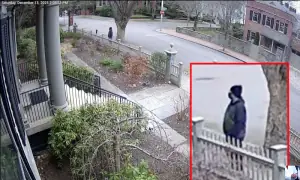
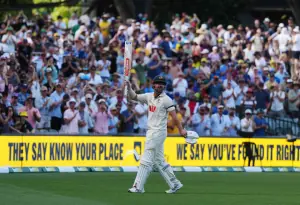




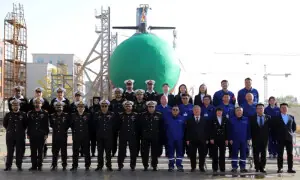

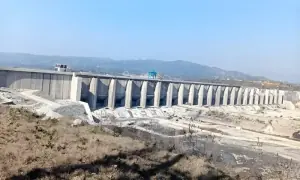

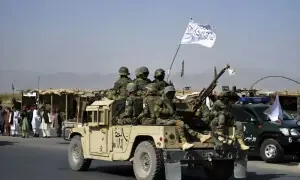
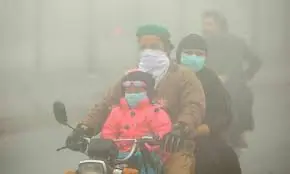
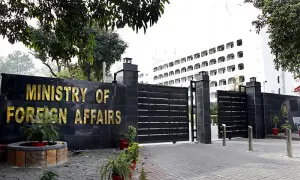

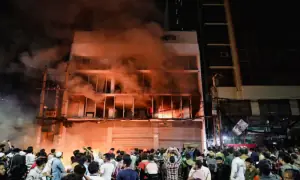

Comments are closed on this story.